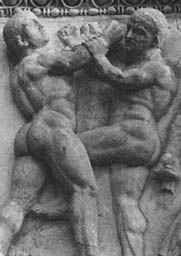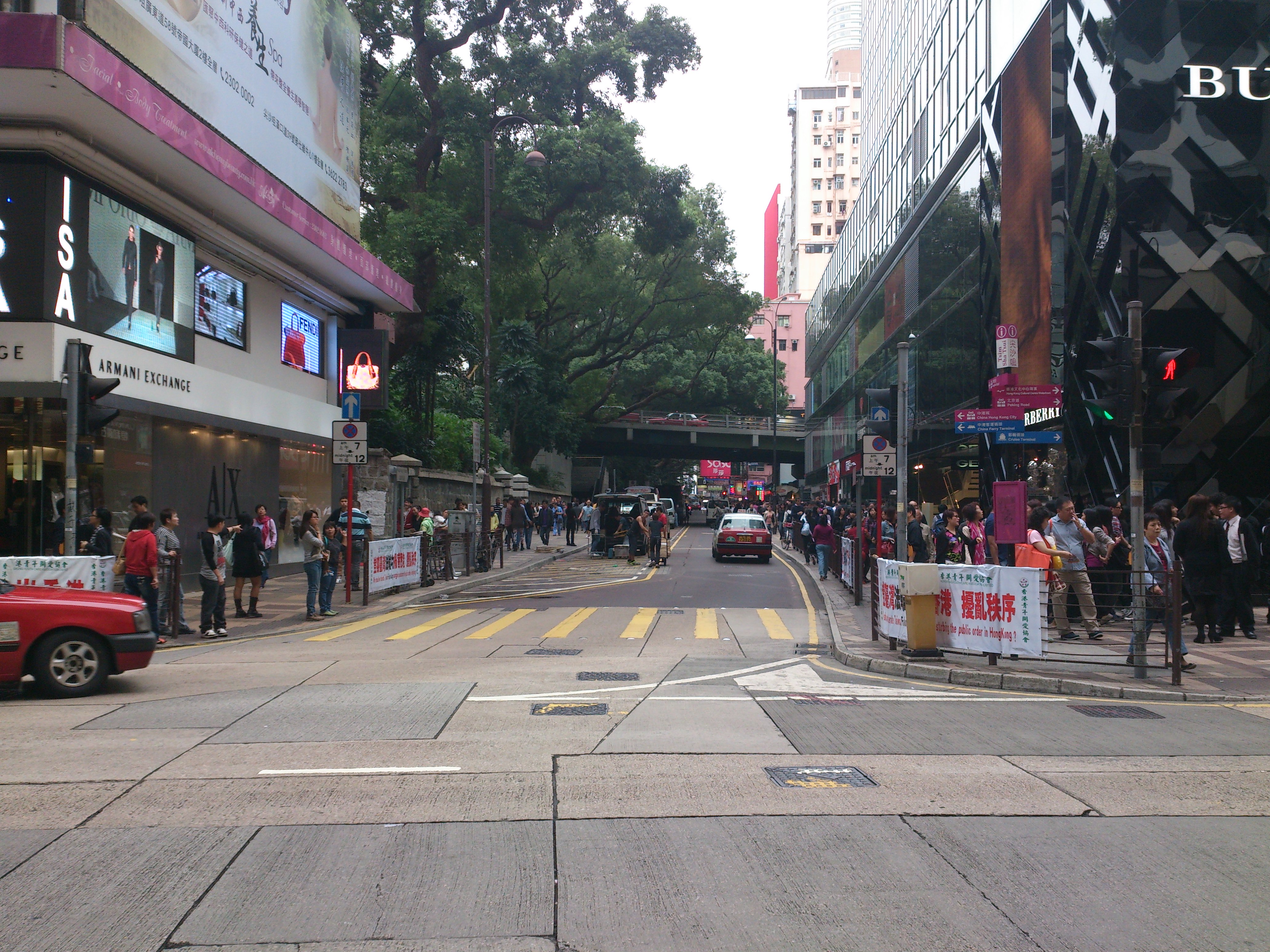|
Shanghai Municipal Police
The Shanghai Municipal Police (SMP; ) was the police force of the Shanghai Municipal Council which governed the Shanghai International Settlement between 1854 and 1943, when the settlement was retroceded to Chinese control. Initially composed of Europeans, most of them Britons, the force included Chinese after 1864, and was expanded over the next 90 years to include a Sikh Branch (established 1884), a Japanese contingent (from 1916) and a volunteer part-time special police (from 1918). In 1941, it acquired a Russian Auxiliary Detachment (formerly the Russian Regiment of the Shanghai Volunteer Corps). History Origins The first detachment of 31 Europeans, effectively borrowed from the Hong Kong Police and led by Samuel Clifton, was recruited almost immediately after the formation of the Shanghai Municipal Council (SMC). These men were on patrol by September 1854. Further men were recruited from the Royal Irish Constabulary, London's Metropolitan Police and from the military pres ... [...More Info...] [...Related Items...] OR: [Wikipedia] [Google] [Baidu] |
Shanghai International Settlement
The Shanghai International Settlement () originated from the 1863 merger of the British Concession (Shanghai), British and American Concession (Shanghai), American list of former foreign enclaves in China, enclaves in Shanghai, in which British and American citizens would enjoy extraterritoriality and Consular court, consular jurisdiction under the terms of Unequal treaty, unequal treaties agreed by both parties. These treaties were abrogated in 1943. The British settlements were established following the victory of the British Empire, British in the First Opium War (18391842). Under the terms of the Treaty of Nanking, the five treaty ports including Shanghai were opened to foreign merchants, overturning the monopoly then held by the southern port of Canton (Guangzhou) under the Canton System. The British also established a base on British Hong Kong, Hong Kong. American and French involvement followed closely on the heels of the British and their enclaves were established nor ... [...More Info...] [...Related Items...] OR: [Wikipedia] [Google] [Baidu] |
Yuan Shikai
Yuan Shikai (; 16 September 18596 June 1916) was a Chinese general and statesman who served as the second provisional president and the first official president of the Republic of China, head of the Beiyang government from 1912 to 1916 and Emperor of China from 1915 to 1916. A major political figure during the late Qing dynasty, he spearheaded a number of major modernisation programs and reforms and played a decisive role in securing the abdication of the Xuantong Emperor in 1912, which marked the collapse of the Qing monarchy and the end of imperial rule in China. Born to an affluent Han family in Henan, Yuan began his career in the Huai Army. He was sent to Joseon to head a Qing garrison in Seoul and was appointed imperial resident and supreme adviser to the Korean government after thwarting the Gapsin Coup in 1885. He was recalled to China shortly before the outbreak of the First Sino-Japanese War, and received command of the first New Army, which paved the way for ... [...More Info...] [...Related Items...] OR: [Wikipedia] [Google] [Baidu] |
Hand-to-hand Combat
Hand-to-hand combat is a physical confrontation between two or more persons at short range (grappling distance or within the physical reach of a handheld weapon) that does not involve the use of ranged weapons.Hunsicker, A., ''Advanced Skills in Executive Protection'', Boca Raton FL: Universal Publishers, , , p. 51 The phrase "hand-to-hand" sometimes includes use of melee weapons such as knives, swords, Club (weapon), clubs, spears, axes, or improvised weapons such as entrenching tools. While the term "hand-to-hand combat" originally referred principally to engagements by combatants on the battlefield, it can also refer to any personal physical engagement by two or more people, including law enforcement officers, civilians, and criminals. Combat within close quarters, to a range just beyond grappling distance, is commonly termed close combat or close-quarters combat. It may include lethal and non-lethal weapons and methods depending upon the restrictions imposed by civilian law, ... [...More Info...] [...Related Items...] OR: [Wikipedia] [Google] [Baidu] |
Combat Pistol Shooting
Combat pistol shooting is a modern martial art that focuses on the use of the handgun as a defensive weapon for self defense, or for military and police use. Like most martial arts, combat pistol shooting is practiced both for defense and for sport. Many of the action shooting disciplines are based on combat pistol techniques, and take the form of simulations of defensive or combat situations. History Combat pistol shooting, as separate from target shooting, began to evolve in the early 1900s. Modern tactics of pistol combat were developed in the 1920s by two British members of the Shanghai Municipal Police. (Shanghai was then governed by an international government). At the time the Shanghai streets were rife with criminal activity, and policing in the city was becoming a very dangerous line of work. Captain William E. Fairbairn and Sergeant Eric A. Sykes developed innovative pistol shooting techniques and handgun specifications for the police force. During the Second World War ... [...More Info...] [...Related Items...] OR: [Wikipedia] [Google] [Baidu] |
Eric A
The given name Eric, Erich, Erikk, Erik, Erick, Eirik, or Eiríkur is derived from the Old Norse name ''Eiríkr'' (or ''Eríkr'' in Old East Norse due to monophthongization). The first element, ''ei-'' may be derived from the older Proto-Norse language, Proto-Norse ''*wikt:Reconstruction:Proto-Germanic/ainaz, aina(z)'', meaning "one, alone, unique", ''as in the form'' ''Æ∆inrikr'' explicitly, but it could also be from ''*wikt:Reconstruction:Proto-Germanic/aiwaz, aiwa(z)'' "everlasting, eternity", as in the Gothic form ''Euric''. The second element ''-wikt:ríkr, ríkr'' stems either from Proto-Germanic language, Proto-Germanic ''*wikt:Reconstruction:Proto-Germanic/rīks, ríks'' "king, ruler" (cf. Gothic ''wikt:𐍂𐌴𐌹𐌺𐍃, reiks'') or the therefrom derived ''*wikt:Reconstruction:Proto-Germanic/rīkijaz, ríkijaz'' "kingly, powerful, rich, prince"; from the common Proto-Indo-European language, Proto-Indo-European root *wikt:Reconstruction:Proto-Indo-European/h₃r� ... [...More Info...] [...Related Items...] OR: [Wikipedia] [Google] [Baidu] |
William E
William is a masculine given name of Germanic origin. It became popular in England after the Norman conquest in 1066,All Things William"Meaning & Origin of the Name"/ref> and remained so throughout the Middle Ages and into the modern era. It is sometimes abbreviated "Wm." Shortened familiar versions in English include Will or Wil, Wills, Willy, Willie, Bill, Billie, and Billy. A common Irish form is Liam. Scottish diminutives include Wull, Willie or Wullie (as in Oor Wullie). Female forms include Willa, Willemina, Wilma and Wilhelmina. Etymology William is related to the German given name ''Wilhelm''. Both ultimately descend from Proto-Germanic ''*Wiljahelmaz'', with a direct cognate also in the Old Norse name ''Vilhjalmr'' and a West Germanic borrowing into Medieval Latin ''Willelmus''. The Proto-Germanic name is a compound of *''wiljô'' "will, wish, desire" and *''helmaz'' "helm, helmet".Hanks, Hardcastle and Hodges, ''Oxford Dictionary of First Names'', Oxfor ... [...More Info...] [...Related Items...] OR: [Wikipedia] [Google] [Baidu] |
Chinese Communist Revolution
The Chinese Communist Revolution was a social revolution, social and political revolution in China that began in 1927 and culminated with the proclamation of the People's Republic of China (PRC) in 1949. The revolution was led by the Chinese Communist Party (CCP), which afterwards became the ruling party of China. The political revolution resulted in major social changes within China and has been looked at as a model by revolutionary Communist movements in other countries. During the preceding century, termed the century of humiliation, the decline of the Qing dynasty and the rise of foreign imperialism caused escalating social, economic, and political problems in China. The Qing collapsed in 1912 and were replaced with the Republic of China (1912–1949), Republic of China, which had itself fallen into Warlord Era, warring factions by 1917. A small group of urban intellectuals, inspired by the October Revolution and European socialist ideas, founded the CCP in 1921. They creat ... [...More Info...] [...Related Items...] OR: [Wikipedia] [Google] [Baidu] |
Haiphong Road
Haiphong Road (Traditional Chinese characters, Chinese: 海防道) is a road south of Kowloon Park, Tsim Sha Tsui, Hong Kong. The road links Canton Road and Nathan Road. History It was initially named as Elgin Street but its name changed in 1909 to Haiphong, a city in Vietnam to avoid confusion with another Elgin Street, Hong Kong, Elgin Street on the Hong Kong Island. As such, it is one of the few streets in Hong Kong not named for a Chinese or English subject. Along with Nathan Road it was one of the first two streets laid out in Tsim Sha Tsui."Haiphong Road" ''South China Morning Post'', 2 January 2000. Indian merchants, mostly Hindus from the province of Sindh, began establishing shops on the street in the 1920s, supplying Indian goods to soldiers stationed in the adjacent Whitfield Barracks.Jason Wordie, ... [...More Info...] [...Related Items...] OR: [Wikipedia] [Google] [Baidu] |
Political Prisoner
A political prisoner is someone imprisoned for their political activity. The political offense is not always the official reason for the prisoner's detention. There is no internationally recognized legal definition of the concept, although numerous similar definitions have been proposed by various organizations and scholars, and there is a general consensus among scholars that "individuals have been sanctioned by legal systems and imprisoned by political regimes not for their violation of codified laws but for their thoughts and ideas that have fundamentally challenged existing power relations". The status of a political prisoner is generally awarded to individuals based on the declarations of non-governmental organizations like Amnesty International, on a case-by-case basis. While such statuses are often widely recognized by the international public, they are often rejected by individual governments accused of holding political prisoners, which tend to deny any bias in thei ... [...More Info...] [...Related Items...] OR: [Wikipedia] [Google] [Baidu] |
Imperial Japanese Army
The Imperial Japanese Army (IJA; , ''Dai-Nippon Teikoku Rikugun'', "Army of the Greater Japanese Empire") was the principal ground force of the Empire of Japan from 1871 to 1945. It played a central role in Japan’s rapid modernization during the Meiji period, fought in numerous conflicts including the First Sino-Japanese War, the Russo-Japanese War, World War I, the Second Sino-Japanese War, and World War II, and became a dominant force in Japanese politics. Initially formed from domain armies after the Meiji Restoration, it evolved into a powerful modern military influenced by French and German models. The IJA was responsible for several overseas military campaigns, including the invasion of Manchuria, involvement in the Boxer Rebellion, and fighting across the Asia-Pacific during the Pacific War. Notorious for committing widespread Japanese war crimes, war crimes, the army was dissolved after Japan's surrender in 1945, and its functions were succeeded by the Japan Ground Self-D ... [...More Info...] [...Related Items...] OR: [Wikipedia] [Google] [Baidu] |
Attack On Pearl Harbor
The attack on Pearl HarborAlso known as the Battle of Pearl Harbor was a surprise military strike by the Empire of Japan on the United States Pacific Fleet at Naval Station Pearl Harbor, its naval base at Pearl Harbor on Oahu, Territory of Hawaii, Hawaii, on December 7, 1941. At the time, the U.S. was a Neutral powers during World War II, neutral country in World War II. The air raid on Pearl Harbor, which was launched from Aircraft carrier, aircraft carriers, resulted in the U.S. entering the war on the side of the Allies of World War II, Allies on the day following the attack. The Imperial General Headquarters, Japanese military leadership referred to the attack as the Hawaii Operation and Operation AI, and as Operation Z during its planning. The attack on Pearl Harbor was preceded by months of negotiations between the U.S. and Japan over the future of the Pacific Ocean, Pacific. Japanese demands included that the U.S. ABCD line, end its sanctions against Japan, cease aidi ... [...More Info...] [...Related Items...] OR: [Wikipedia] [Google] [Baidu] |







